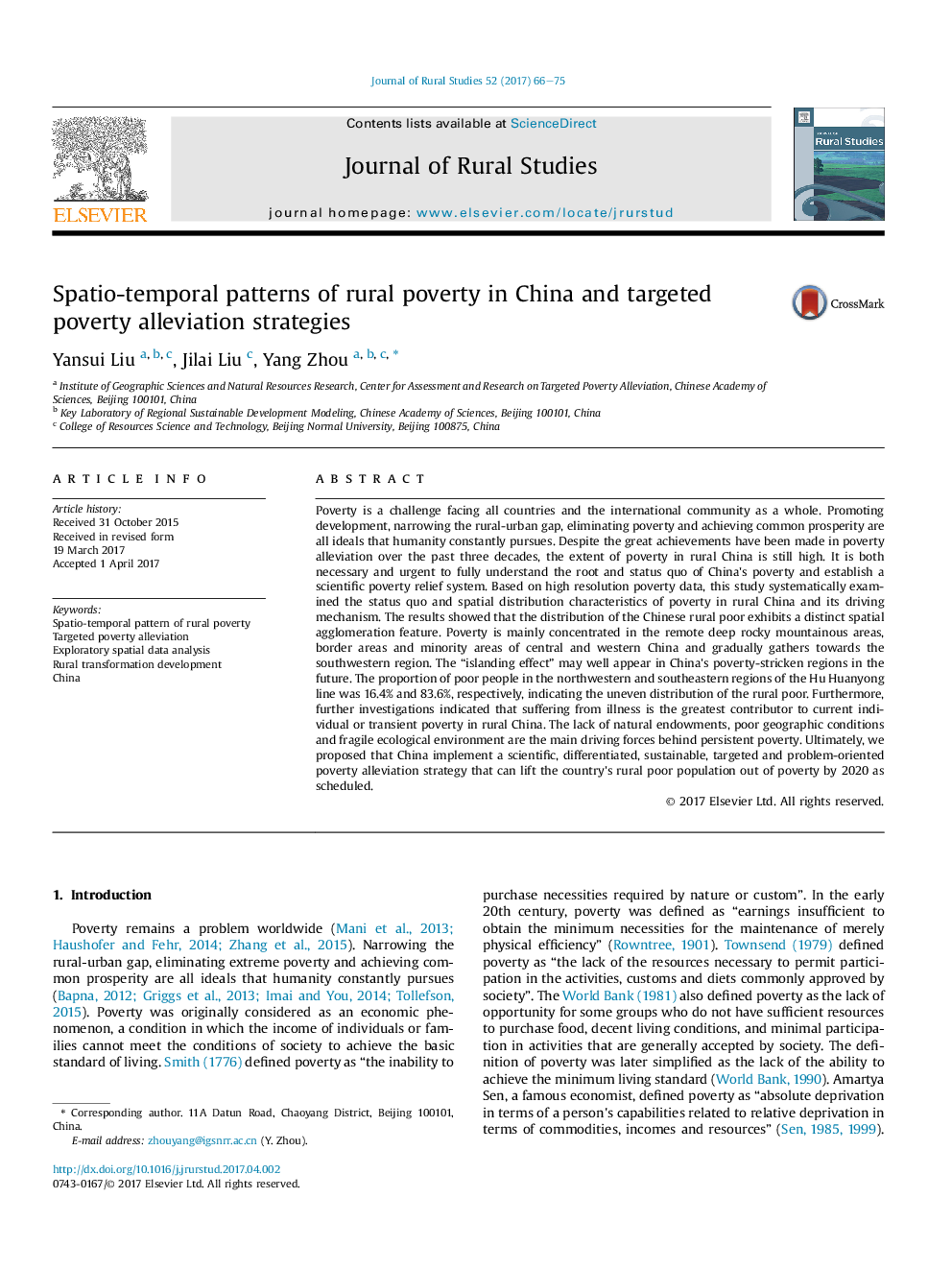ترجمه فارسی عنوان مقاله
الگوهای اسپرتیا-زمانبندی فقر روستایی در چین و راهبردهای کاهش فقر هدفمند
عنوان انگلیسی
Spatio-temporal patterns of rural poverty in China and targeted poverty alleviation strategies
| کد مقاله | سال انتشار | تعداد صفحات مقاله انگلیسی |
|---|---|---|
| 129560 | 2017 | 10 صفحه PDF |
منبع

Publisher : Elsevier - Science Direct (الزویر - ساینس دایرکت)
Journal : Journal of Rural Studies, Volume 52, May 2017, Pages 66-75
ترجمه کلمات کلیدی
الگوی اسپکتیو-زمانبندی فقر روستایی، کاهش فقر هدفمند، تجزیه و تحلیل داده های فضایی اکتشافی، توسعه روستایی، چین،
کلمات کلیدی انگلیسی
Spatio-temporal pattern of rural poverty; Targeted poverty alleviation; Exploratory spatial data analysis; Rural transformation development; China;

